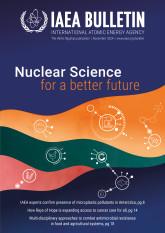This IAEA flagship initiative brings together public and private partners across the globe to address the challenge of plastic pollution and improve plastic recycling as well as monitoring pollution in the ocean, where the bulk of plastic waste ultimately ends up.
Global Collaboration for a Cleaner Future
The initiative represents a global effort under the IAEA to combat plastic pollution, involving 86 countries in marine microplastics monitoring and 39 countries developing innovative recycling technology.
Innovative Use of Nuclear Science
Leveraging the power of nuclear science and technology, NUTEC Plastics uses irradiation to treat existing plastics for higher-value reuse and employs nuclear science for the trace and monitor microplastics in the ocean.
Marine Microplastics Monitoring
Over 50 labs worldwide are being equipped for marine microplastics analysis, turning them into an interconnected network supporting standardized sampling, analysis protocols and data sharing.




